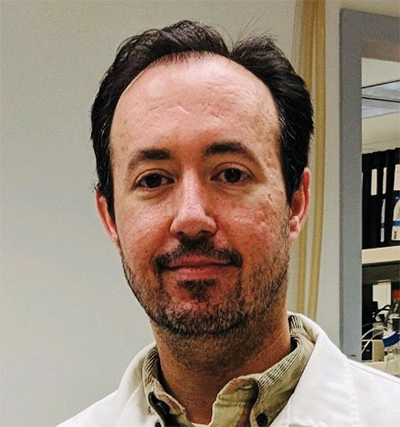Lipoprotein researcher to talk about structure studies
For , the thrill of research comes from standing on the precipice of the unknown.
“There is nothing quite like the feeling of striking gold and getting a new piece of critical data,” he said. “At that very moment, you’re likely the only person in the entire world that knows that biology.”
 John Melchior refined a technique to separate high-density lipoprotein particles based on the presence of certain proteins.
John Melchior refined a technique to separate high-density lipoprotein particles based on the presence of certain proteins.
Melchior researches the structural complexity of high density lipoproteins, or HDL, as a postdoctoral fellow in lab at the . Based on his work, he was selected by the to speak in a special session highlighting up-and-coming researchers at the 麻豆传媒色情片 and 麻豆传媒色情片 Biology annual meeting.
Melchior said he “fell in love with lipoproteins” during his graduate studies at Wake Forest University, where he was trained in lipid biochemistry. He has continued to study lipoproteins, this time from the protein side. He refined a technique to separate HDL particles based on whether they contain a protein called apoA-II and determined that apoA-II is critical for the positive effects of HDL.
“I found this extremely exciting,” he said. “The logical next steps were to understand the role of apoA-II’s structure in modulating this function.”
His initial attempts to understand the structure of apoA-II were halted when that a previously published crystal structure of the protein was falsified. But Melchior sees what he called an “unfortunate setback” as an opportunity for his structural studies to help fill the gaps of what remains unknown about apoA-II.
Melchior hopes his work will benefit the HDL research community as a whole; for him, this community is almost as important as the research itself.
“I’ve been fortunate to establish relationships with some amazing people who also happen to be excellent scientists,” he said. “I’m really grateful for the community and the friendships that have enriched my life.”
Dissecting the structure of HDL
High density lipoproteins, or HDL, are known as the “good” cholesterol and are thought to decrease risk of heart disease as well as chronic inflammatory diseases. Though commonly thought of as a single number on a patient’s medical chart, HDL is incredibly complex.
The focus of John Melchior’s research is this complexity. He is developing new ways of physically separating subspecies of HDL. Despite their physical similarity, Melchior has been able to isolate very specific subspecies and has found that particles that contain a protein called apoA-II are better at removing cholesterol from cells compared to particles that lack apoA-II. This ability to remove “bad” cholesterol, called the cholesterol efflux property, has been linked to protection against heart disease in several clinical studies.
Melchior’s work could have a direct impact on medical care in addition to contributing to the field of lipid research. The information he gains from understanding the structures of different HDL particles could be used to develop clinical assays that may better identify patients that are at higher risk for heart disease.
Enjoy reading ASBMB Today?
Become a member to receive the print edition four times a year and the digital edition monthly.
Learn moreGet the latest from ASBMB Today
Enter your email address, and we鈥檒l send you a weekly email with recent articles, interviews and more.
Latest in People
People highlights or most popular articles

Subramanian receives electron microscopy honor
He delivered remarks at the International Conference on Electron Microscopy in Bangalore, India.

Bioart for fall: From order to disorder
The cover of the fall issue of ASBMB Today was created by ASBMB member, Soutick Saha, a bioinformatics developer at Wolfram Alpha LLC.

Doudna wins Priestley Medal
She will receive a $20,000 research grant and will formally accept the honor at the ACS Spring 2026 conference.

In memoriam: David Baltimore
He was a Nobel laureate, president emeritus at the California Institute of Technology and an ASBMB member for more than 50 years.

In memoriam: Stuart A. Kornfeld
He was a pioneer in glycobiology and was a member of the 麻豆传媒色情片 and 麻豆传媒色情片 Biology for more than 50 years.

Top reviewers at ASBMB journals
Editors recognize the heavy-lifters and rising stars during Peer Review Week.

